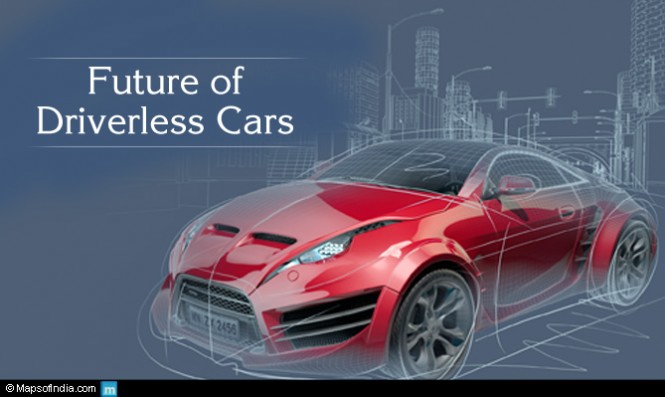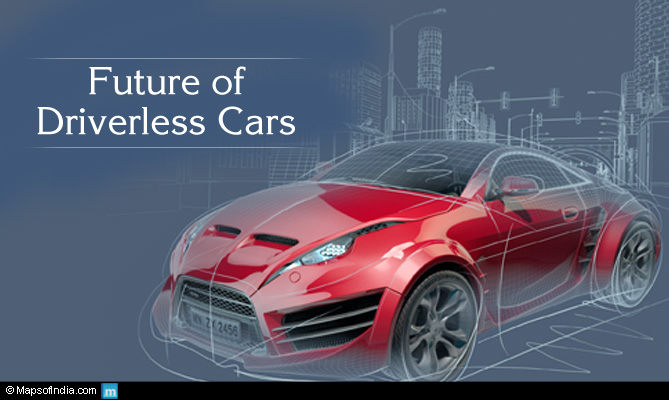 Gone are the days when you have to manoeuvre your car through congested roads. Very soon, you can sit beside the driver’s seat and relax because the car itself is going to drive you to office. Does this sound too good? Use of ‘autonomous technology’ in automobile will surely add a new chapter in our lives. It will change the way we work, travel and sustain.
Gone are the days when you have to manoeuvre your car through congested roads. Very soon, you can sit beside the driver’s seat and relax because the car itself is going to drive you to office. Does this sound too good? Use of ‘autonomous technology’ in automobile will surely add a new chapter in our lives. It will change the way we work, travel and sustain.
First Trials in Britain
Taking a first step in the field of development of new technology, Britain (four cities) rolled out the prototype driverless cars in February 2015. The government-funded project, which unveiled the driverless ‘pods’, is believed to make a mark in the automobile industry. It is the first autonomous vehicle to be allowed to run on public road with regulations from the Transport Department.
Self-driven cars: The idea seems to be very interesting, but definitely not easy
GPS system plays a pivotal role in running such a car. It is accompanied by a highly sophisticated technology that determines the active conditions on the road and use the information from the previous two systems and act upon it.
The system should be as good as a human mind. It can be adaptive in new environment and produce and assimilate huge amount of data at the same time. The autonomous computer system will be guided by the best path chosen by the GPS. The major challenge is that the system has to be equipped with second level of intelligence with the ability to fill in additional details in the maps provided by GPS. Additional radars, camera, lasers and sensors are also required to get the dynamic view of the ever-changing surroundings.
Evaluation of Regulatory Framework of Transport
Keeping in mind the immense potential of the ‘autonomous technology’ in automobile, which leads to better management of road space and ensures road safety, the Government of United Kingdom planned to review its transport regulatory framework. The advanced autonomous safety systems are categorised into High Automation and Full Automation for the purpose of testing the driverless cars in UK. The regulation alteration will be enforced on four trials in Bristol, Milton Keynes, Coventry and Greenwich.
Other Ventures into ‘Autonomous Technology’ in Cars
Volvo’s ‘Drive Me’ Project: ‘Drive Me’ is an ambitious project of Volvo to incorporate 100-self driven cars, which can be driven on designated roads, using the Autopilot system. The autonomous driving system will have multiple beam scanners, radars, ultrasonic sensors, trifocal camera and GPS monitoring system.
Google’s Self-Driven Cars: Google started its autonomous car project way back in 2008 and introduced its self-driven car prototype in May 2014. It claimed to be the first company to build a car without brake, accelerator or steering wheel. It is powered by an electric motor around 100-mile range.
Apple’s Self Driven Cars: Apple Inc. is also venturing into the potential markets of autonomous automotive technology and working on parts and production methods of electric and connected-car technology.
Advantages:
- Lack of human error ensures a safe journey.
- Advanced technology will increase efficiency, which will reduce time and effort by humans.
- Traffic congestion and collision will be reduced.
- Issue of parking scarcity and improper parking will be resolved.
Challenges:
- Threat of malfunctioning of the sensors, camera, crashing of the computer and GPS signal disruptions due to bad weather are the main challenges which will cause major damage of property and lives.
- It will have a negative impact on the economy and will jeopardize existing jobs.
- It will be extremely expensive in the initial days.
Future of Driverless Cars
Safety will be the key to the success of self-driven cars. Technologically advanced nations would invest in this option. After UK, Netherlands would be the next in line to roll out fully autonomous shuttles without backup driver on board by December 2015. To eliminate the transport regulatory conflicts between countries, the United Nations has formed a forum for harmonising autonomous technology.
Explore More :
- Auto Expo 2016 : Day 3 & 4 Highlights
- Auto Expo 2016 Action on Day 1 and Day 2
- Rise of Luxury Cars in India
- Most Awaited Bikes in India in 2016
- Photographs from Auto Expo – 2014
- Outdoor Stunts At The Auto Expo 2014
- Top 10 Cars under Rs. 5 lakh in India
- Automotive blogs of the world
- Driverless Automobile: Anticipations and Apprehensions





